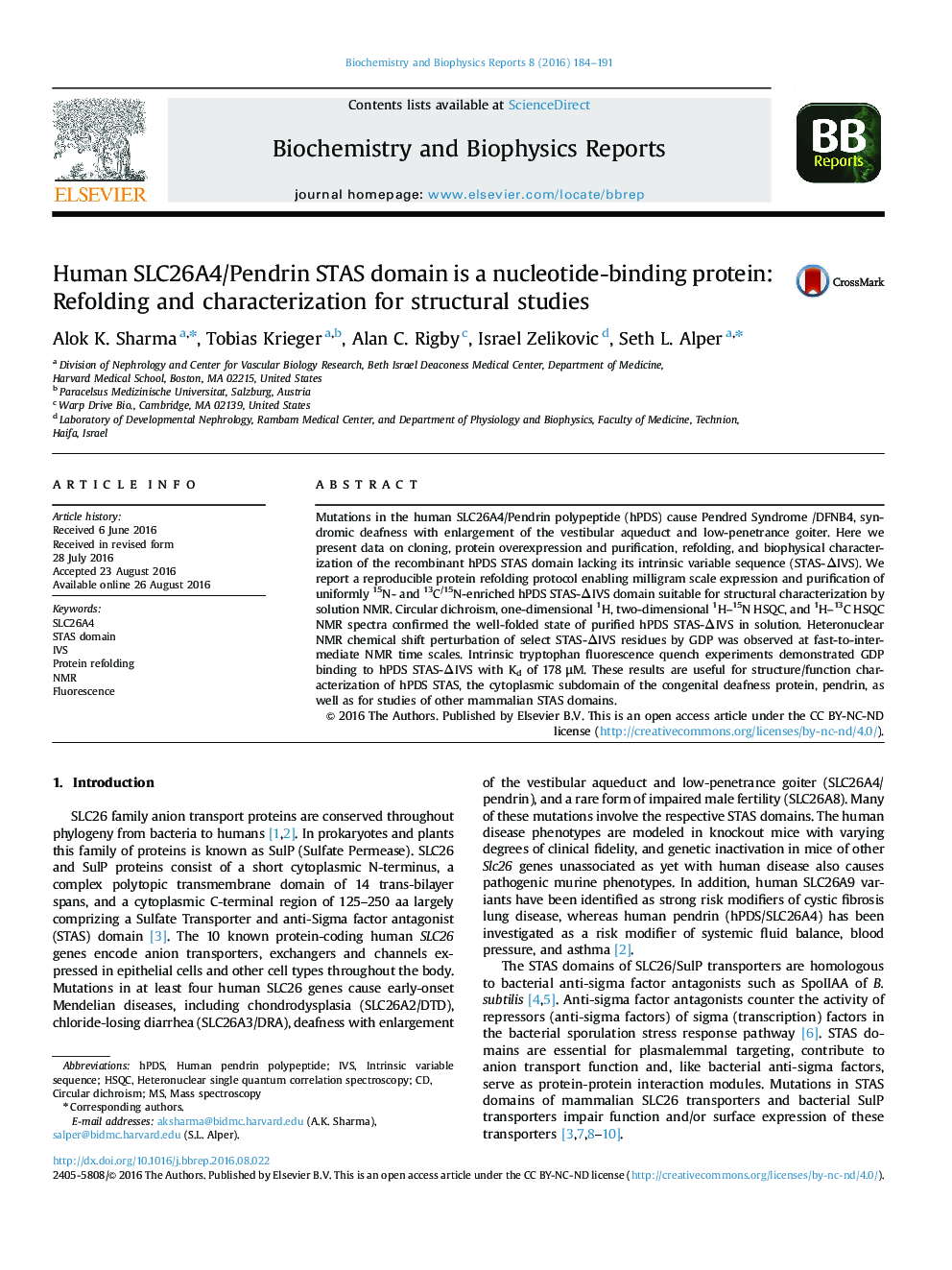| Article ID | Journal | Published Year | Pages | File Type |
|---|---|---|---|---|
| 8298484 | Biochemistry and Biophysics Reports | 2016 | 8 Pages |
Abstract
Mutations in the human SLC26A4/Pendrin polypeptide (hPDS) cause Pendred Syndrome /DFNB4, syndromic deafness with enlargement of the vestibular aqueduct and low-penetrance goiter. Here we present data on cloning, protein overexpression and purification, refolding, and biophysical characterization of the recombinant hPDS STAS domain lacking its intrinsic variable sequence (STAS-ÎIVS). We report a reproducible protein refolding protocol enabling milligram scale expression and purification of uniformly 15N- and 13C/15N-enriched hPDS STAS-ÎIVS domain suitable for structural characterization by solution NMR. Circular dichroism, one-dimensional 1H, two-dimensional 1H-15N HSQC, and 1H-13C HSQC NMR spectra confirmed the well-folded state of purified hPDS STAS-ÎIVS in solution. Heteronuclear NMR chemical shift perturbation of select STAS-ÎIVS residues by GDP was observed at fast-to-intermediate NMR time scales. Intrinsic tryptophan fluorescence quench experiments demonstrated GDP binding to hPDS STAS-ÎIVS with Kd of 178 μM. These results are useful for structure/function characterization of hPDS STAS, the cytoplasmic subdomain of the congenital deafness protein, pendrin, as well as for studies of other mammalian STAS domains.
Keywords
Related Topics
Life Sciences
Biochemistry, Genetics and Molecular Biology
Biochemistry
Authors
Alok K. Sharma, Tobias Krieger, Alan C. Rigby, Israel Zelikovic, Seth L. Alper,
